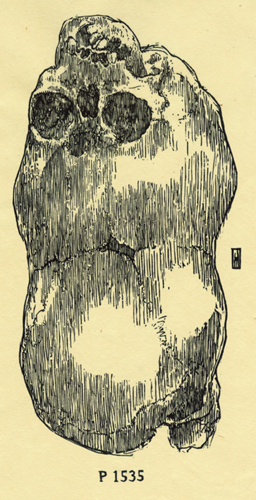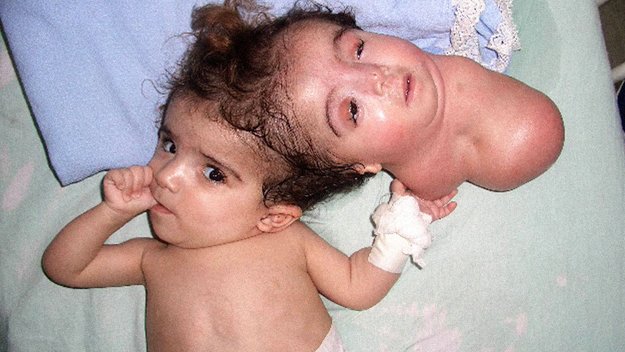WARNING: Some of the following images are graphic and may be upsetting.
In 1790 the astute surgeon Everard Home wrote of ‘a species of lusus naturae so unaccountable, that, I believe, no similar instance is to be found upon record’. He was writing of the Boy of Bengal after observing drawings and collecting and reviewing the accounts of several of his peers.
 While the boy was remarkable for both his medical condition and perseverance, Home was actually incorrect in his initial assumptions.
While the boy was remarkable for both his medical condition and perseverance, Home was actually incorrect in his initial assumptions. The Two-Headed Boy of Bengal was born in the village of Mundul Gait in Bengal in May of 1783 into a poor farming family. His remarkable life was very nearly extinguished immediately after his delivery as a terrified midwife tried to destroy the infant by throwing him into a fire.
Miraculously, while he was rather badly burned about the eye, ear and upper head, he managed to survive. His parents began to exhibit him in Calcutta, where he attracted a great deal of attention and earned the family a fair amount of money. While the large crowds gathered to see the Two-Headed Boy his parents took to covering the lad with a sheet and often kept him hidden – sometimes for hours at a time and often in darkness.
As his fame spread across India, so did the caliber of his observers. Several noblemen, civil servants and city officials arranged to showcase the boy in their own homes for both private gatherings and grand galas – treating their guests to up close examinations. One of these observers was a Colonel Pierce who described the encounter to the President of the Royal Society, Sir Joseph Banks and it was Sir Banks who later forwarded the account to the surgeon Everard Home.
The term ‘Two-Headed’ may be a bit misleading as rather that two heads side by side, the Boy actually had head atop the other. When compared to the average child, both heads were of an appropriate size and development. The second head sat atop the main head inverted and simply ended in a neck-like stump. The second head seemed to, at times, function independently from the main head. When the boy cried or smiled the features of the second head did not always match. Yet, when the main head was fed, the second head would produce saliva.
Furthermore, if the second head was presented with a breast to suckle – it would attemp to do so. While the main head was well formed the secondary head did posses some irregularities. The eyes and ears were underdeveloped. The tongue was small and the jaw malformed but both were capable of motion. When the Boy slept, the secondary head would often be observed alert and awake – eyes darting about.
Despite the attention the Boy of Bengal received, none of it was medical in nature. There were no intensive first hand medical examinations of the Boy on record and the vast majority of the press attention given to the Boy focused no on his condition, but rather his ‘freakish’ appearance. The Boy, who seemed to suffer no serious ill effects in relation to his condition, died at the age of four from a cobra bite. It was only then, after much unseemly business, that medicine was able to examine the case.
The Boy was buried near the Boopnorain River, outside the city of Tumloch but the grave was soon robbed by Mr. Dent, a salt agent for the East India Company. He dissected the putrefied body himself and gave the skull to a Captain Buchanan of the East Indian Company. Buchanan brought the skull to England, where it ended up in the hands of his close friend- Everard Home.
When Mr. Dent had dissected the heads he discovered that the brains were separate and distinct. Each brain was also enveloped in its proper coverings and it appeared as though both brains received the nutrition required to sustain life and thought. The skull of the Boy of Bengal can still be seen at the Hunterian Museum of the Royal College of Surgeons of London.
The classification of this condition is today known as Craniopagus parasiticus and technically falls under the category of parasitic twins however many of the early naturalists have attempted to classify the Bengal case as a case of conjoined twins due to the signs of independent life given by the secondary head.
Previous to 1783 teratology texts listed no fewer that eight suspected cases of Craniopagus parasiticus however the Boy of Bengal case is not only the earliest well documented account, but also the first account of such a case surviving past infancy.
Recently on December 10, 2003, Rebeca Martínez was born in the Dominican Republic with this rare condition and she was also the first baby born with the condition to undergo a surgical removal of the second head.
Sadly, Rebeca did not survive the 11-hour operation and died on February 7, 2004.
X-ray of Rebeca Martinez's skull
On February 19, 2005, Manar and Islaam Maged– also born with the same condition- underwent a successful 13-hour surgery in Egypt, but tragically, they died on March 25, 2006 due to repeated infection.
"She [Manar] was admitted to hospital in a very bad way," said Abla el-Alfy, a consultant paediatrician involved in her care.
"She had a very severe infection in the brain and she wasn't able to fight it."
Doctors at the Benha Children's Hospital had regarded the fact that Manar survived the initial 13-hour operation as a success.
Her condition improved after the surgery, but she continued to suffer regular infections, Mr Alfy told Reuters news agency.
The second head [Islaam] contained eyes, a nose and a mouth, but was not connected to any internal organs and whether it was capable of independent thought is unclear.
Islaam could smile, blink, cry, and tried to suckle but never developed a full body (only a small remnant), or lungs and heart, and instead was dependent on oxygen and nutrients provided by Manar.
10 month old Manar Maged
Manar post surgery.
Adapted from Jan Bondeson’s book: The Two Headed Boy
Information taken from BBC news Sunday, 26 March 2006, 22:11 GMT 23:11 UK 
images : 1. Hunterian Museum at The Royal College of Surgeons (London) 2. Postcard from the Hunterian Museum of London 3. Hand drawings of the Boy of Bengal by Mr. Smith 4. Hand-colour drawings of The Boy of Bengal by Mr Dent. 5. www.oprah.com/oprahshow/Its-a-Miracle 6. USA Today news 2004.
d








Oh man.
ResponderBorrar